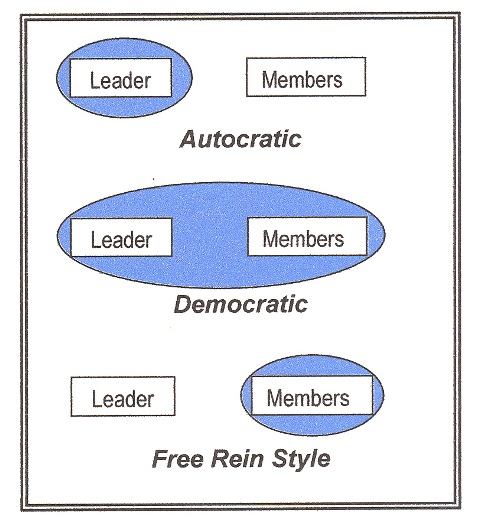

A good team leader will also need to motivate the team and the individual members. The leader can motivate the team by having a clear vision and being enthusiastic about the tasks at hand. Motivating individual team members takes a little more work, because the team leader will need to know each person well enough to know what will motivate him or her. Some people would be motivated by money, while others may be motivated by recognition, socializing, learning new skills or information, receiving time off, or promotion.
It may be possible that others on the team could help motivate individual members. For example, if socializing motivates a team member, he or she could be a supporter of some other team members. A leader should never motivate by fear or intimidation because those tactics will destroy trust and team spirit. Rather, a good leader should use one of the leadership approaches mentioned earlier. Using the right approach with the right team member will greatly help motivate him or her to do a good job.
Working as a team allows individual members to develop their leadership skills. Some teams will have one leader whereas other teams may have several leaders at various stages of the project.
Before you become a leader, you must first perform some self–analysis. That means thinking about yourself and your ability to lead the group. Having strong communication skills is important, but it is also important to assess your attitude, belief in the goals, and behavior.
First of all check your attitude. As mentioned earlier, each member's attitude plays a huge role in the team's overall success. The leader must maintain a positive attitude at all times because the other members of the team will look to the leader for encouragement. Having a positive attitude will also help motivate the others.
Along with the leader's attitude comes the vision, or a clear understanding of the group's goals. The leader should also be excited about the team's goals. The leader must be inspired by the vision, and by being inspired, the leader can then help the others envision the desired outcome.
Finally, the leader should look at his or her behavior. Group members will model the leader's behavior. This is not a time to expect the team to "do as I say and not as I do." If you expect your members to meet their deadlines and follow through on their commitments, then as the leader, you must always perform well.
There are three basic styles of management: autocratic, democratic, and free rein (laissez-faire).
In the autocratic style, the leader tells the other members what to do and how to do it. The leader does not solicit or accept advice from others. This may be necessary if the team is short on time and there is a low level of commitment. If a leader wants to elicit more motivation from the team members, the democratic style works much better.
In the democratic style, the leader works with the other members to jointly make decisions about how things are accomplished. The leader still has the final say in making decisions. This style allows all members to "buy in" to the process.
In the free rein (laissez-faire) style, members make the decisions. Team members in this style must be able to set priorities, problem solve, and delegate tasks. Even though the members make decisions, the leader is still responsible for all decisions.
 |
You may find yourself alternating between styles in your role as a manager. Attitude also plays a component in your role as a manager. You may want to take the Management Attitude Test to see assess your attitude.
Leaders can have different approaches along with their management styles. Some leaders are more task-oriented, while others may be more member-oriented. Task-oriented leaders focus more on the task at hand and how to complete it while member-oriented leaders are concerned about the people and how to support them.
No matter what your leadership style, the members themselves will help you shape which approach you must take to help everyone succeed. The chart below may help you understand where you fit in with the task- or people-orientation.
|
||||||||||||||||||||
The difference between team leadership and team management has to do with innovation vs. administration. Managers maintain; they accomplish things, accept responsibility for or are in charge of things. Leaders guide, influence, and set direction.
Typically managers focus on systems and procedures, whereas leaders focus on the people. Managers control and leaders inspire trust. Leaders have a long-range view and plan towards it; managers have a short-range view and work towards completing tasks.
Both leadership and management are important, but it is also important to understand that they are two different things. If a company is maintaining the status quo, then a manager is sufficient. However, if a company wants to innovate or make changes, leadership is required. Leaders ask questions seeking to bring about positive change.
In any work environment, people relate to each other in many different ways. Highly effective teams trust each other, and conflict is minimal. One very important component is building that trust and rapport among team members. Rapport is a bridge between two people that creates a positive feeling about the relationship between the two. The best way to build rapport is to share experiences. The more you have in common with your team members, the easier it will be to build rapport.
Another dynamic of group interaction is the individual personalities of the group members. Understanding personality types, communication styles, and group interactions may make it easier for you to understand and work with others.
Next section: Communication Style
| Team Building Skills Home Page |
Velda Arnaud,
Ph.D.
Executive Director
Lead, Educate, Serve Society
leadeducateserve@gmail.com
Last updated 10/4/14 (va)
Copyright 2004-present